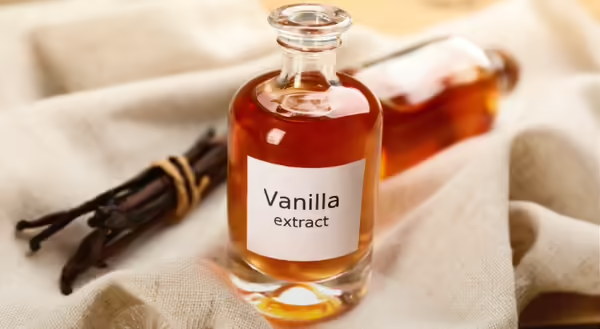
The scent of vanilla is found in so many things, including candles, soaps, and lotions, but it’s also in tons of different foods, topping the list for the world’s favorite flavor. Why do we love vanilla so much? It’s widely accepted scent is rich, smooth, slightly floral, and subtly sweet.
Either vanilla extract or vanilla essence is likely to be found in most households. Vanilla extract is made by soaking aged vanilla bean pods in a mixture of water and ethyl alcohol. As it sits, the alcohol draws out the vanillin, a compound that gives it the characteristic vanilla flavor. The Food and Drug Administration standards for vanilla extract require that it contain at least 35% alcohol and 13.35 ounces of vanilla bean per gallon. Then, the bean pods are filtered out and the extract is ready to use. Vanilla essence, on the other hand, is also known as imitation vanilla and is not made from vanilla beans at all, but rather uses synthetic vanillin, as well as water, ethanol, propylene glycol, and other ingredients. It is much less expensive than vanilla extract but lacks the complexity of flavors in true vanilla. Nonetheless, it can certainly be used as a substitute and will make less of a difference when used in baked goods without a dominant vanilla flavor, like chocolate chips cookies. However, you may wish to splurge for the extract when making vanilla pudding, custard, icing or iced coffee.
Try making your own vanilla extract by splitting vanilla beans in half (Madagascar is a common variety) and soaking them in vodka for preferably 6 months to a year. While the waiting is hard, you’re left with a large quantity and excellent quality for use in various recipes!
Source: Shoemaker, S. & McGrane, K. (2023). What’s the difference between vanilla extract and essence? www.healthline.com
About the Author
Jenna Smith is a Nutrition and Wellness Educator with University of Illinois Extension, serving Livingston, McLean, and Woodford Counties. Smith uses her experience as a registered dietitian nutritionist to deliver impactful information and cutting-edge programs to Livingston, McLean, and Woodford Counties and beyond.
